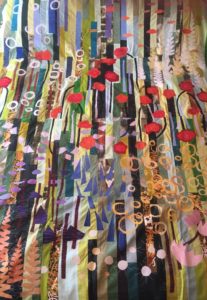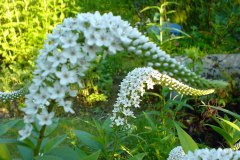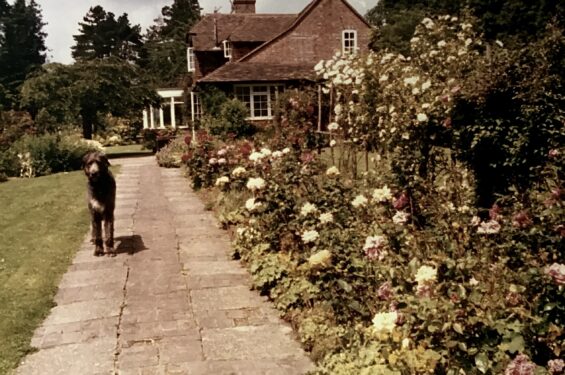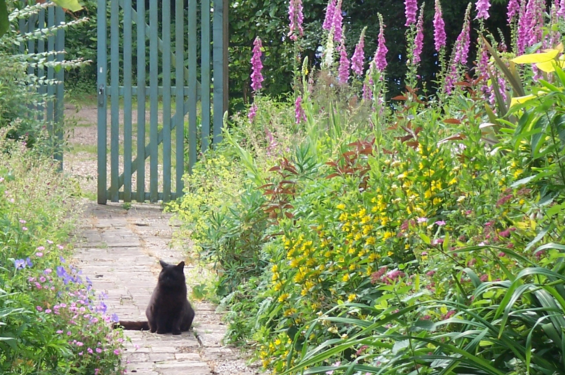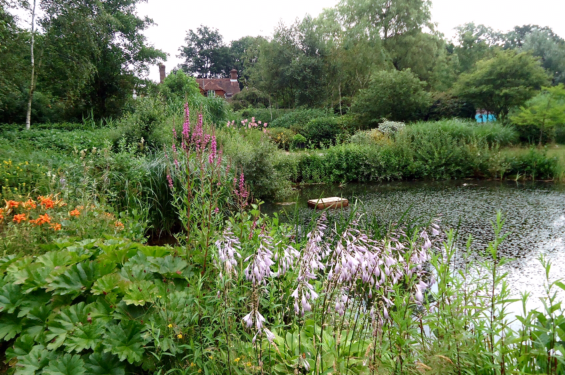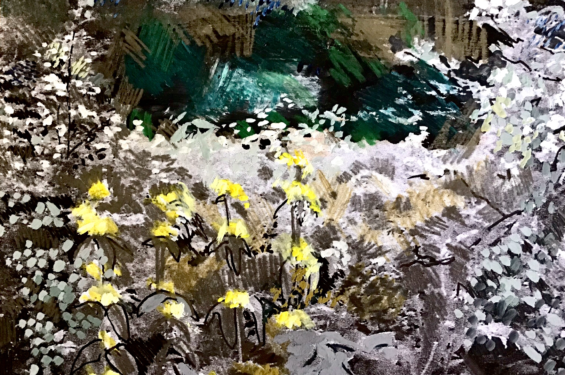The Herbaceous Borders
Projects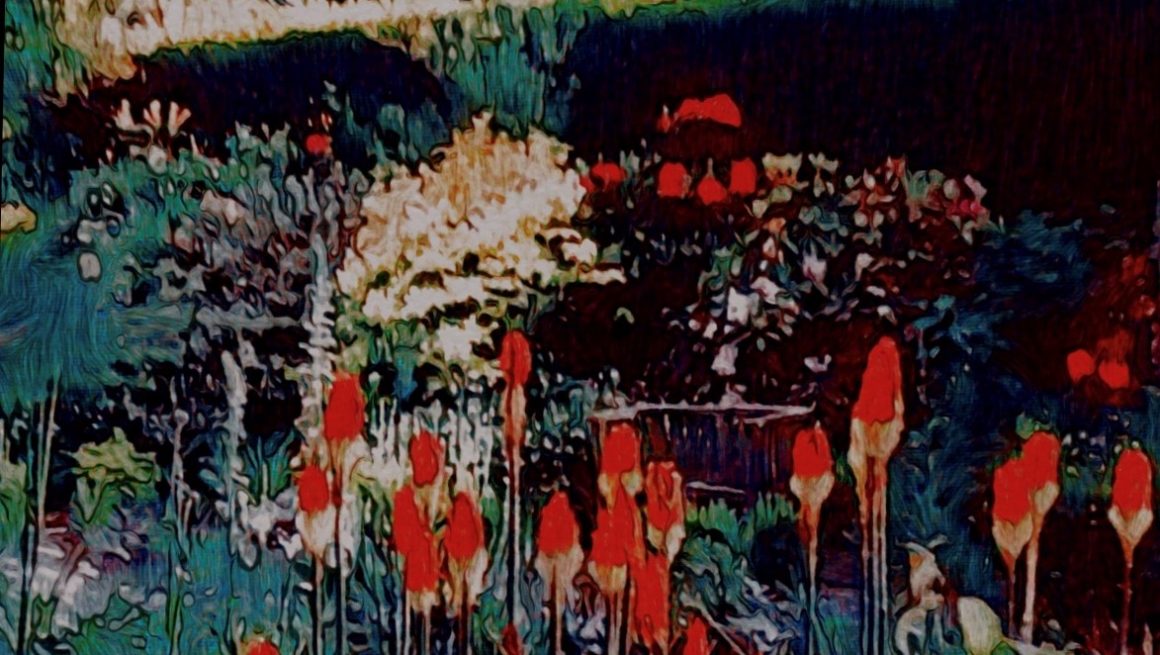
These two wide borders leading from the house to the parking area acquired the grand title ‘herbaceous’, early on, to differentiate them from other parts of the garden. It is true that they contained many herbaceous perennials, but we had also included a framework of shrubs, and some trees to maintain structure and interest through the winter and early spring.
They evolved from what had been two narrow borders. On one side of the path a single row of rhododendrons in a visually demanding cacophony of hard colours. The opposite side just contained scrubby rose bushes, well past any semblance of beauty and an ancient gappy row of chestnut poles to support straggly climbers. Between them was a thin inconsequential strip of grass which looked more like a ploughed field in no time, because the dogs’ idea of a warm welcome to visitors was to race up and down it, skidding about and barging each other.
We kept this as it was for several years apart from removing the sickest rose bushes and introducing easy perennials and annuals to attempt to fill in the spaces of bare soil between what remained.
This layout had had its time. We had tried to adapt it to make it softer, but it was time for a complete rethink. There was nothing worth keeping.
Both borders were dug out, as was the ‘lawn’, and the chestnut poles removed. This opened up the whole area and gave us plenty of scope for planting. This huge space and the question of how we would fill it, was daunting. What we were left with were areas of the same length and width, either side of the path. They balanced each other well, and the scale felt right; more generous, and a satisfying welcome to the cottage and garden beyond.
There somehow needed to be a visual break halfway down. We had bought a teak 1920’s Heals table and four matching chairs from a house clearance. The table had seen better days, but the chairs were still in reasonable condition, maybe not for everyday use but ideal as a feature in themselves. These were placed on opposite sides of the borders, halfway down. To add more structure and to accentuate them as a feature, we added sixteen one litre pots of Buxus sempervirens (Box) plants to form, with a few year’s patience and nurturing, four cubes either side of the chairs. The Box cubes thrived and eventually successfully broke up the long view up the path. As time went on, we added squared trellis with climbing plants at either end to enclose the whole area and to screen the garden from the parked cars.
We were good friends with a couple who were enthusiastic and inspiring gardeners. They had a wide knowledge of horticulture and a fabulous garden. When they decided to retire and move away they told us that they and their neighbours had made the dramatic decision to sell both properties to a developer to build apartments. Would we be interested in having as many plants as we wanted before the bulldozers moved in? What an extraordinarily surprising and generous offer. Of course we would, gladly. Our two estate cars’ worth of shrubs and perennials filled a good proportion of the new borders, and we added more we’d acquired or propagated from our own stock.
As the year progressed the two borders took on different outlines and characteristics. They looked increasingly green and promising from March, and I would gradually introduce more stock, dotted in a natural way into gaps. One year I noted I’d added “ about 50 well established Phlomis russelliana grown from seed” and “ dozens of Digitalis purpurea carefully dotted in amongst everything else “ I wrote “ I am not aiming for large areas of any individual plant, but attempting more natural groupings even if it requires considerable contrived effort to achieve the look”
“Euphorbia are unfolding their vivid green flower heads and the Hellebores are looking good. Other seedlings are emerging here and there. I have no idea what they are but will enjoy waiting to see.”
Through the summer months the perennials got bigger and bigger. Globe artichoke, Cephalaria gigantea and Miscanthus sinensis dwarfed smaller plants and the shrub’s outlines were obscured. By the end of the summer there was a balance to be found between completely losing the plot with exuberant planting, and judicious cutting back or hidden staking here and there. The joy was in the changes from year to year. Taking pleasure from individual plants as well as the overall look, and noting down countless ideas and plans and changes for the following year.
I guess more perfectionist gardeners would have gladly cut back all the chaos in late autumn, but we preferred to leave as much as we could, only cutting back anything that had blown over or obscured something nearby. By doing this seed heads were saved, and everything was left to seed and fade until late winter when three solid days’ weeding and clearing was needed to restore the basic structure and build up our muscles for another years gardening.
